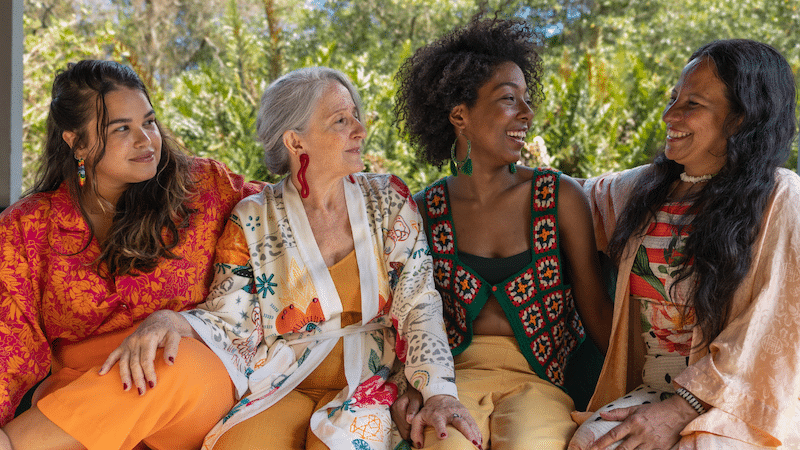Intersectionality

What is intersectionality? 1-4
Intersectionality is a term coined by Kimberlé Crenshaw, a prominent Black feminist scholar and civil rights activist. She defines intersectionality as, as “a metaphor for understanding the ways that multiple forms of inequality or disadvantage sometimes compound themselves and create obstacles that often are not understood among conventional ways of thinking.” Intersectionality is a concept that understands how different parts of a person’s identity, like their race, gender, sexual orientation, disability, etc. influence their personal experiences, challenges, and perceptions. Intersectionality recognizes that everyone has their own unique experiences of discrimination and privilege that influence how they think of themselves, others, and how they navigate life.
When it comes to issues of sexual violence, intersectionality plays a key role in highlighting how compounding identities can make it challenging for an individual to seek and receive the appropriate support they deserve. It is important to recognize that people have many different identities that intersect and interact with one another. This underscores the need for a diverse range of resources and support services for survivors of sexual violence. Individuals from various backgrounds may require specific types of assistance that address the complexities of their intersecting identities.
Title VII of the Civil Rights Act of 1964 is a critical component in prohibiting discrimination based on a person’s identity in employment settings.5 Title VII prohibits employment discrimination based on race, color, religion, sex, or national origin. Title VII recognizes the intersections of privilege and inequity.
Examples of Intersectional Identities
A sexual assault survivor who is also a transgender woman of color has intersecting identities that can create barriers to reporting and accessing appropriate services and support. For example, she may have limited access to culturally appropriate services as a woman of color. Women of color in the U.S. face disproportionate disparities in health care and other settings.6 As a transgender woman, she may experience or anticipate experiencing discrimination and face a lack of support from insufficient service providers.7, 8 Transgender women face the highest levels of violence among all demographic groups, with studies showing that they are disproportionately targeted for assault and harassment.9 This discrimination and these disparities are compounded for transgender women of color, who face the highest rates of violence, such as homicide and sexual assault.10
A sexual assault survivor who is a male living with HIV also encounters significant barriers. Male survivors of sexual assault often face societal stigma and misconceptions that can prevent them from seeking help.11 Similarly, HIV carries its own set of stigmas that may lead to discrimination in healthcare settings and fear of being judged or treated differently because of their HIV status.12 The survivor may fear discrimination from healthcare providers due to experiencing sexual assault and their HIV status. Research indicates that male survivors are often discouraged from coming forward due to perceptions of masculinity, fear of homophobia, and the stigma surrounding male victimization, which can be further exacerbated by their HIV status.12 They may struggle to find providers who can offer comprehensive care that addresses their specific needs without bias, leading to neglect or inadequate support in both sexual assault and healthcare scenarios.
Consequently, both individuals face intersecting challenges that not only affect their mental and physical health but also amplify feelings of isolation and vulnerability. Addressing these disparities requires culturally competent care, increased awareness, and tailored support services that recognize and affirm their identities and experiences. It is essential for community organizations and healthcare providers to work towards creating inclusive environments that actively combat discrimination and provide survivors with the care and support they deserve. Supporting survivors of sexual assault, particularly those from marginalized communities, is vital in fostering healing and recovery and addressing the systemic barriers they face in accessing essential services.
Addressing Push-back on Intersectionality
When discussing intersectionality, there often arises push-back that attempts to rank identities based on who experiences the most oppression. However, this perspective is misguided. Intersectionality is not a competition about who has it worse; rather, it serves as a framework for understanding how various forms of discrimination and privilege intersect to shape individual experiences. The focus should be on access; specifically, access to resources, services, and support. By recognizing that individuals can face multiple barriers simultaneously due to their intersecting identities, we can better advocate for structural changes that enhance access to equitable services for everyone. Acknowledging intersectionality invites us to consider how marginalized communities experience systemic inequities that can limit their opportunities for healing and recovery. By prioritizing access over comparison, we can foster a more inclusive dialogue that respects and uplifts the experiences of all individuals.
Sources
- Crenshaw, K. W. (2013). Mapping the margins: Intersectionality, identity politics, and violence against women of color. In The public nature of private violence (pp. 93-118). Routledge.
- Armstrong, E. A., Gleckman-Krut, M., & Johnson, L. (2018). Silence, power, and inequality: An intersectional approach to sexual violence. Annual Review of Sociology, 44(1), 99-122. https://doi.org/10.1146/annurev-soc-073117-041410
- Canan, S.N., Levand, M.A. (2019). A Feminist Perspective on Sexual Assault. In: O’Donohue, W.T., Schewe, P.A. (eds) Handbook of Sexual Assault and Sexual Assault Prevention. Springer, Cham. https://doi.org/10.1007/978-3-030-23645-8_1
- Ralston, K. M. (2012). An intersectional approach to understanding stigma associated with male sexual assault victimization. Sociology Compass, 6(4), 283-292. https://doi.org/10.1111/j.1751-9020.2011.00456.x
- Mazaheri, K., & Bonano, C. C. (2022). Intersectionality: Understanding a new subcategory of discrimination under title VII. Oklahoma Bar Journal, 93(2).
- Trinh, MH., Agénor, M., Austin, S.B. et al. Health and healthcare disparities among U.S. women and men at the intersection of sexual orientation and race/ethnicity: a nationally representative cross-sectional study. BMC Public Health 17, 964 (2017). https://doi.org/10.1186/s12889-017-4937-9
- Smart, B. D., Mann-Jackson, L., Alonzo, J., Tanner, A. E., Garcia, M., Refugio Aviles, L., & Rhodes, S. D. (2020). Transgender women of color in the U.S. South: A qualitative study of social determinants of health and healthcare perspectives. International Journal of Transgender Health, 23(1–2), 164–177. https://doi.org/10.1080/26895269.2020.1848691
- McLemore, K. A. (2018). Beyond demography: A critical review of the literature on transgender health. American Journal of Public Health, 108(4), e4-e16.
- James, S., Herman, J., Rankin, S., Keisling, M., Mottet, L., & Anafi, M. A. (2016). The report of the 2015 US transgender survey. National Center for Transgender Equality [NCTE].
- Human Rights Campaign (HRC). (2020). “A national report on violence against the transgender community in America.” Retrieved from https://www.hrc.org/resources/violence-against-the-trans-and-gender-expansive-community-in-2020
- Thomas, J. C., & Kopel, J. (2023). Male Victims of Sexual Assault: A Review of the Literature. Behavioral sciences (Basel, Switzerland), 13(4), 304. https://doi.org/10.3390/bs13040304
- Herek, G. M. (2009). Sexual stigma and sexual prejudice in the United States: A conceptual framework. Contemporary perspectives on lesbian, gay, and bisexual identities (pp. 65–111). Springer Science & Business Media. https://doi.org/10.1007/978-0-387-09556-1_4



